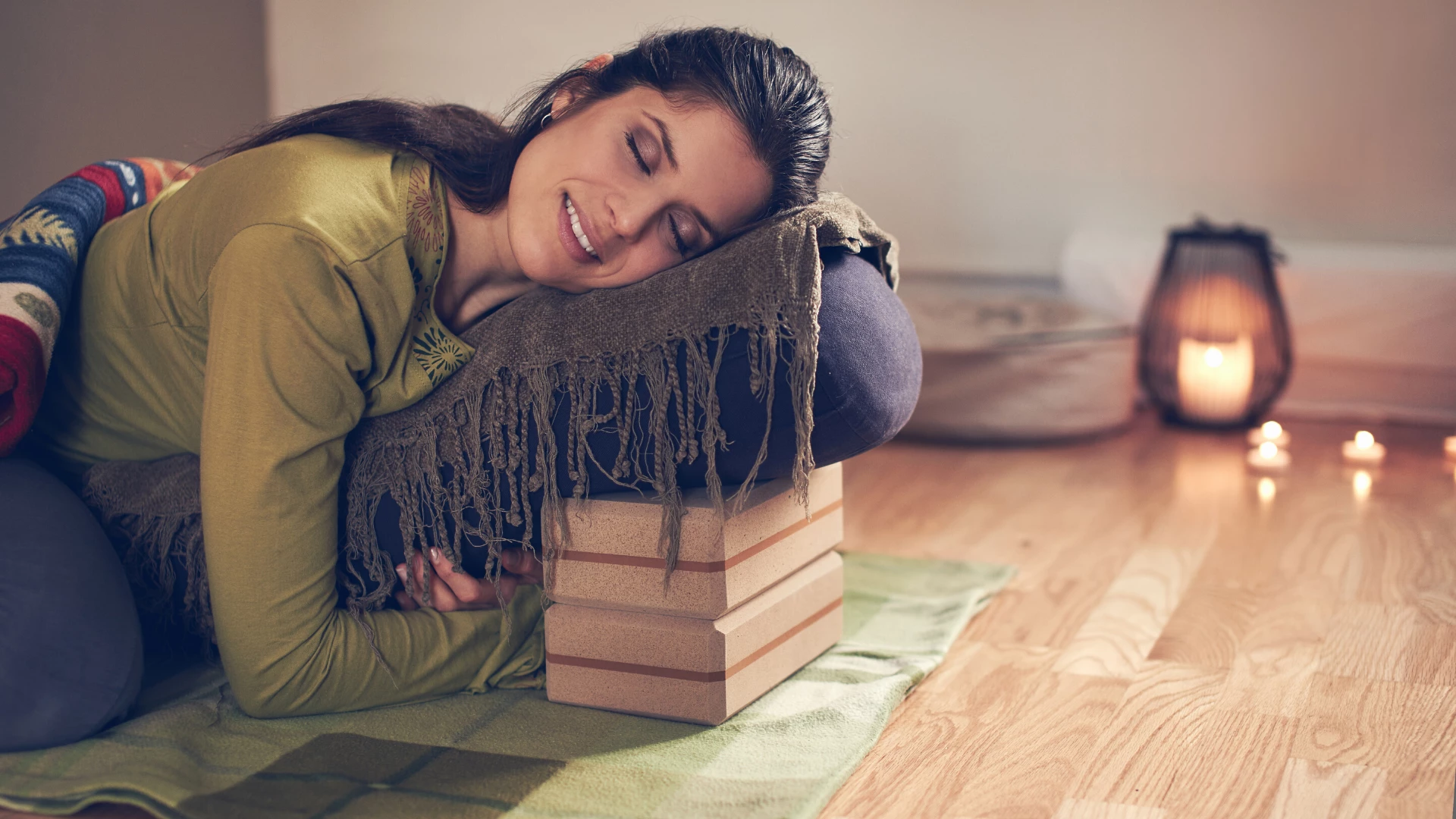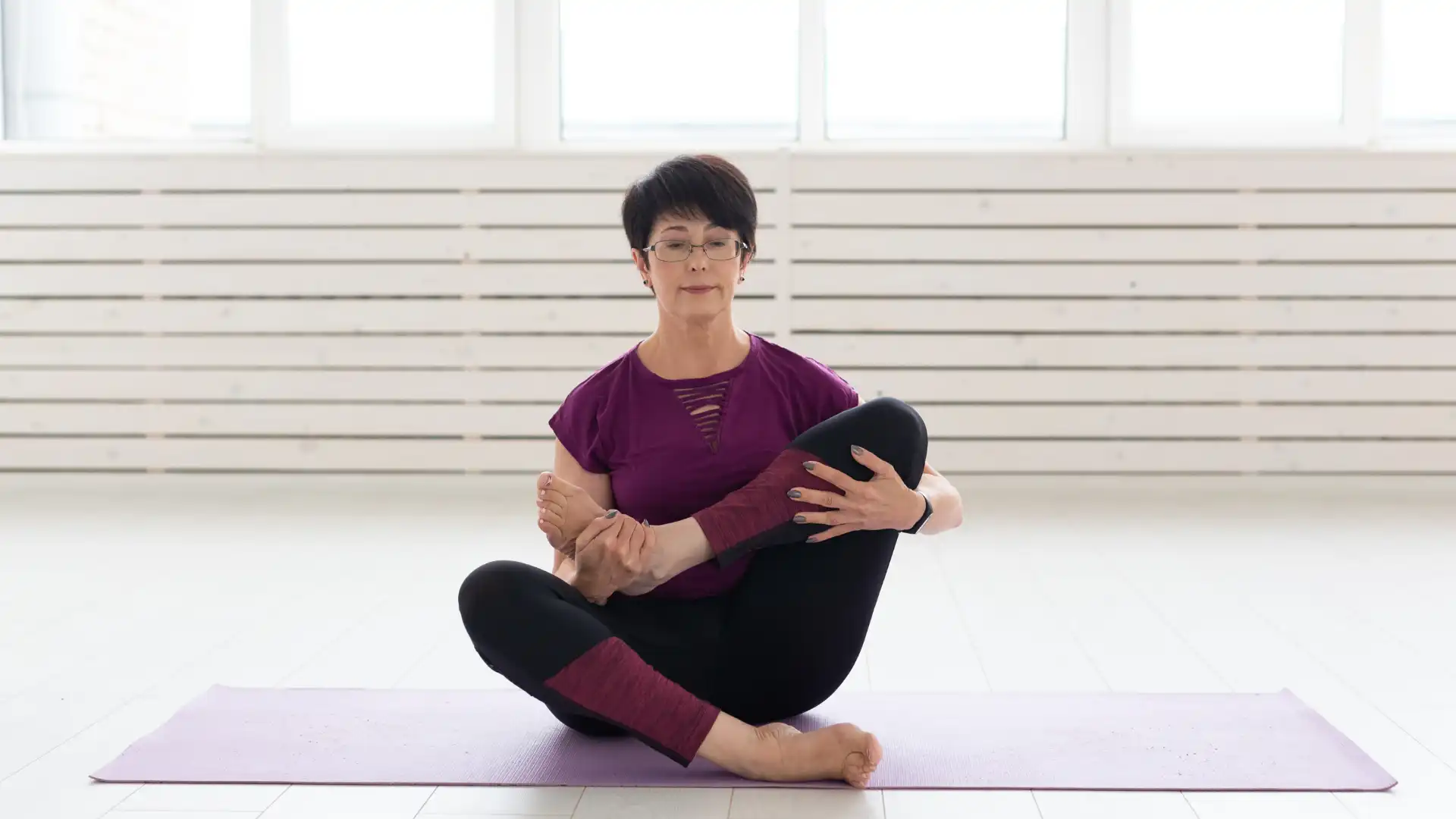Want to Be Healthy? Relaxation is Key

Relaxation matters—big time. When I first encountered true whole-being relaxation, I was blown away. Following a 20-minute Somatics audio recording by Amy Matthews, I felt embedded in my skin and on the floor in a way I had never experienced.
I knew I had to dive deeper into these practices, so I have since spent the last three years exploring somatic practices. They have fundamentally changed my practice and teaching, regarding my appreciation for the healing power of relaxation– an undervalued intentional practice concerning injury prevention, rehabilitation, sleep problems, stress, optimal performance, and so much more.
Relaxation and Healing
Our autonomic nervous system, which is responsible for just about everything, has two parts: sympathetic (let’s go) and parasympathetic (now stop). These two parts are equal in their importance, helping to regulate our energy levels, digestion, sleep, stress levels, and our overall sense of wellbeing. Yet if both components are so important, why are we so parasympathetically deficient?
The human quest to discover and achieve has allowed us to make huge technological leaps, pushing the boundaries of space and time, and what can be achieved in a workday. The possibility of what we can be leaves many of us in near-constant “on” mode with the idea of switching “off” feeling like a threatening proposition. At least this is how it felt and sometimes feels for me.

Co-founder of This Yoga and a medically trained doctor, Christoph Seiland says: “Relaxation is the basis of healing and regeneration, as it works from the inside out. The more relaxed we are, the more resources the body can recruit for recovery and regeneration for our bodily systems, which are especially important during periods of stress.
“Anyone who’s experienced stress can testify how even sleep is not relaxing. During such times, we have to do things to intentionally relax and reset our whole being.”
Relaxing for Calm and Vitality
Bringing awareness to increasing tension then relaxing helps us to distinguish between chronic, low-level contraction, and release. It’s well known in exercise science that a chronically tight muscle is not able to contract optimally due to its weakened, permanently switched-on state. When we can release such areas, there is a profound sense of refreshed relief.
When we speak about muscles, we’re not saying one part is separate from the whole, but rather that a part of the body is intertwined with the whole. As such, when we release the psoas muscle, we experience a sense of relief that affects not only the psoas but spreads through the whole body and will have an effect on how we conduct ourselves after that.
Such a feeling comes not from pushing harder, but from bringing awareness to any areas of tension, then releasing. Trusting the felt experience of the body is not only key to relaxing into yourself, but it also reinforces the feeling that the body is a resource of wisdom.
When we practice relaxation intentionally, and with patience, it is simply not possible to maintain the same “gotta keep pushing” mentality. Just as heart rate variability is key to heart health, I see mindset variability as vital to our overall health and our ability to shift gears between doing and non-doing: relaxation matters—big time.
Also, read...
Yoga for Stress Relief: 2 Practices for Deep Relaxation
Nourish Your Winter Body with a Restorative Yoga Practice
3 Steps to Practicing Active Happiness
Related courses
Need an Energy Makeover? How Yoga Can Help You Boost Vitality
Keys to Finding Inner Strength: A Yogic Wisdom Path to Developing Greater Resilience

Charlene McAuley – My yoga exploration spans 13 years, teaching for almost seven of those years with varied students, including World Cup footballers and wise 80-year olds. I have an insatiable fascination with movement and psyche, recognizing many years ago through my yoga practice that movement can determine one’s mindset and mindset can determine one’s movement. I work primarily with the ‘here and now,’ wanting to explore what is occurring in the present moment so that I can encourage myself and students to live with more awareness.


